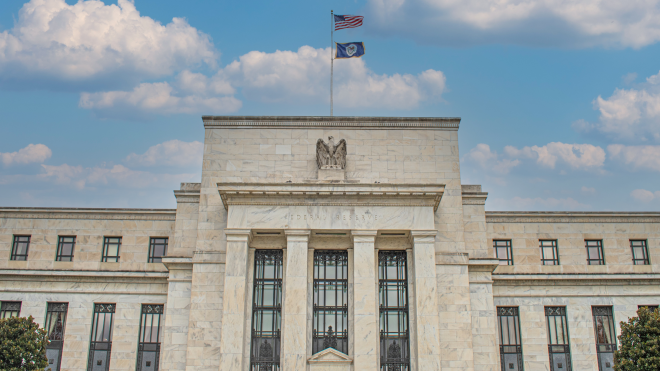As markets evolve and economic conditions shift, investors often look to the Federal Reserve for cues on the future direction of interest rates, inflation, and overall financial stability. In May 2025, the Fed made another closely watched decision—to hold interest rates steady. While seemingly uneventful on the surface, this choice carries important implications for your portfolio and long-term financial strategy.
For individuals nearing retirement or currently retired, understanding how central bank policy affects their investments is key to managing risk and preserving wealth. In this blog, we explore what the Fed’s latest move means, what investors should consider in response, and how CKS Summit Group helps clients navigate these changes with clarity and confidence.
Current State of the Market and Interest Rates
As of mid-2025, the Federal Reserve has maintained the federal funds rate at 5.25%–5.5%, continuing its cautious stance following a series of rate hikes in 2023 and 2024. This steady approach reflects the Fed’s priority to keep inflation under control, even as economic growth begins to show signs of slowing.
Recent data suggests inflation is gradually cooling but remains above the Fed’s long-term 2% target. Labor markets remain resilient, but consumer spending and business investment are moderating. While many investors hoped for rate cuts by now, the Fed has made it clear that policy easing will only come once inflation is firmly under control.
What does this mean for the markets?
- Equities have been mixed, with some volatility stemming from uncertainty around future Fed moves.
- Bond yields remain elevated, offering opportunities for income-seeking investors.
- Cash and money markets continue to offer higher-than-average returns compared to the last decade.
While the market remains dynamic, maintaining a long-term perspective is essential—especially for those approaching retirement who may feel compelled to act on short-term economic headlines.
How the Fed’s Decision Impacts Your Portfolio
1. Higher Yields on Cash and Bonds
The current rate environment has made cash and short-term bonds more attractive, with money market accounts and CDs yielding between 4–5%. For retirees and conservative investors, this can provide a meaningful source of income.
However, it’s important to recognize that holding too much cash may limit long-term growth—particularly if inflation outpaces yields over time.
2. Continued Volatility in the Stock Market
Uncertainty around the Fed’s next move often leads to market fluctuations. While sectors like utilities and consumer staples may benefit from stability, growth stocks (especially in tech) tend to be more sensitive to rate decisions.
💬 Advisor Insight: “For long-term investors, short-term volatility often presents opportunities. Staying invested and diversified is more effective than trying to time the market based on Fed policy.”
3. Borrowing Costs Remain Elevated
For those with variable-rate debt or plans to purchase property or refinance, elevated interest rates mean higher borrowing costs. This impacts not only household budgets but also investment decisions around real estate and business growth.
4. Inflation May Still Erode Purchasing Power
Even with rates elevated, inflation remains a concern. As prices continue to rise, maintaining purchasing power in retirement requires growth-oriented investments, not just fixed income or cash.
Strategies for Navigating a High-Rate Environment
1. Diversify Beyond Cash
While it’s tempting to move assets into cash or equivalents when rates are high, overreliance can reduce your portfolio’s ability to grow over time. A diversified mix of stocks, bonds, and alternatives can help manage risk while maintaining the potential for growth.
2. Take Advantage of Bond Opportunities
Higher interest rates have improved yields across fixed-income investments. Carefully selected bond ladders, municipal bonds, or short-duration strategies can offer income with moderate risk.
3. Revisit Your Withdrawal Strategy
For retirees, now is a good time to review how your income is generated. Are you drawing from interest, dividends, or capital gains? Structuring withdrawals strategically can help minimize the impact of market fluctuations and optimize tax outcomes.
4. Review Your Long-Term Plan
Markets and interest rates will continue to fluctuate—but your financial goals are long-term. Ensuring your plan is built for resilience, not reaction, is the best way to stay on track.
Final Thoughts: Aligning Your Portfolio with Today’s Economy
The Federal Reserve’s recent decision to hold rates steady reflects a complex economic balancing act. For investors and retirees, the key takeaway is not to chase headlines—but to ensure your financial strategy remains aligned with your goals, risk tolerance, and income needs.
At CKS Summit Group, we help clients make sense of these market shifts and adjust strategies where needed—always with a focus on long-term financial health. Whether it’s rebalancing your portfolio, exploring fixed-income opportunities, or revisiting your withdrawal plan, our team is here to guide you.
If you’re unsure how today’s interest rate environment impacts your investments or retirement strategy, we encourage you to reach out for a complimentary consultation.
FAQs
Q1. Why does the Fed raise or lower interest rates?
The Fed adjusts interest rates to control inflation, stabilize prices, and support employment. Higher rates slow spending and borrowing, which can reduce inflation. Lower rates aim to stimulate the economy during downturns.
Q2. How do high interest rates affect my retirement portfolio?
High rates can reduce the value of some stock and bond investments in the short term but can also increase income from savings and fixed-income assets. A balanced strategy helps manage these effects.
Q3. Should I move my investments to cash while rates are high?
Not necessarily. While cash offers safety and attractive short-term yields, it may not outpace inflation in the long run. A diversified portfolio provides more stability and growth potential.
Q4. Is this a good time to invest in bonds?
Yes, higher interest rates have made bonds more attractive. The right mix of duration and credit quality can provide income and stability in a balanced portfolio.
Q5. How can I protect my portfolio from inflation?
Incorporating assets that historically outpace inflation—like stocks, real estate, or inflation-protected bonds—can help preserve purchasing power.
Disclaimer: This content is for informational and educational purposes only and is not intended as financial advice. CKS Summit Group does not offer personalized investment recommendations. No information contained in this blog should be considered a solicitation, offer, or endorsement of any particular investment strategy or product.



